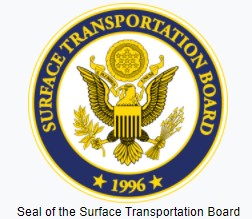Reciprocal Switching Policy Would Benefit U.S. Wheat Importers
U.S. Wheat Associates (USW) joined other major shipping groups this week in calling on the U.S. Surface Transportation Board (STB) to adopt policies that have the potential to lower costs and improve service for wheat rail shippers and their customers. The policy proposal, commonly referred to as “reciprocal switching,” has been under the STB’s consideration for some time.
Reciprocal switching seeks to provide rail shippers such as grain elevators who are commonly only served by one railroad access to ship on other railroads, provided they are located within a reasonable switching distance. The desired effect is the creation of competition between railroads, where previously there was none. That competition has the potential to lower costs for USW customers around the world.
What is Reciprocal Switching?
The STB defines reciprocal switching (sometimes referred to as competitive access) as follows: Under reciprocal switching, an incumbent carrier transports a shipper’s traffic to an interchange point, where it switches the rail cars over to the competing carrier. The competing carrier pays the incumbent carrier a switching fee for bringing or taking the cars from the shipper’s facility to the interchange point, or vice versa. The competing carrier’s total rate to the shipper incorporates the switching fee. Reciprocal switching thus enables a competing carrier to offer its own single-line rate to compete with the incumbent carrier’s single-line rate, even if the competing carrier’s lines do not physically reach a shipper’s facility.
Freight Waves, an online publication, defines this concept in simpler terms: reciprocal switching occurs when a shipper has access to one freight railroad but wants access to a nearby competing freight railroad to cultivate a competitive pricing environment. A shipper can get that access at an interchange between the two railroads.
An executive order by President Biden encouraged the STB to “promote competition and economic opportunity,” and specifically to encourage reciprocal switching.

The Surface Transportation Board is an independent federal agency charged with the economic regulation of various modes of surface transportation, primarily freight rail. STB held a hearing on proposed reciprocal switching regulations March 15 to 16, 2022,
What USW Advocates
Except for the Pacific Northwest, U.S. wheat production is not close to river transportation, and export facilities are too far away to rely on trucking. As a result, railroads play a key role in the export supply system. Over the last decade, rail rates have increased exponentially, and rates to ship wheat are higher than for other commodities with similar handling characteristics.
USW’s comments filed with the STB noted those higher rates between 22% and 39% for wheat movements compared to corn in four major regions. A June 2017 USDA Agricultural Marketing Service study corroborated these results, finding no underlying cause driving the increases in wheat rates. These premiums relative to other commodities demonstrate the current market power of U.S. railroads and the lack of competition afforded to wheat shippers.
USW also encouraged the STB to consider other relevant factors as it considers a new policy, such as: (1) whether the arrangement would further the rail transportation policies in 49 U.S.C. § 10101; (2) the efficiency of the proposed route; (3) whether the arrangement would allow access to new markets; (4) the impacts, if any, of the arrangement on capital investment, quality of service, and employees; (5) the amount of traffic that would be moved under the arrangement; and (6) the impact, if any, of the arrangement on the rail transportation network.
U.S. Wheat Competitiveness
Reciprocal switching has existed in Canada for many years, called “interswitching.” The situation there makes a compelling comparison to the United States because the spring wheat and durum growing regions are similarly positioned in the country’s interior. And the shipping distances to export facilities are nearly identical. However, despite the similarities, work collected by one of USW’s member state wheat commissions showed comparable origin-to-export point rail moves in Canada were 30% less than similar U.S. moves at the time.
Differing government rail policies (including more favorable terms for reciprocal switching) are one of the few significant differences in market position between the two countries. USW also realizes that the competitive access benefits Canadian farmers enjoy will make the proposed merger of Canada’s CP railroad with the KCS more advantageous for Canadian growers – if the STB does not apply its standard to enhance competition.
More Efficient Competition
USW believes that implementing reciprocal switching will make the rail system more efficient. We hope it will compel the railroads to provide better service and be more prepared by introducing more competition into the rail industry.


